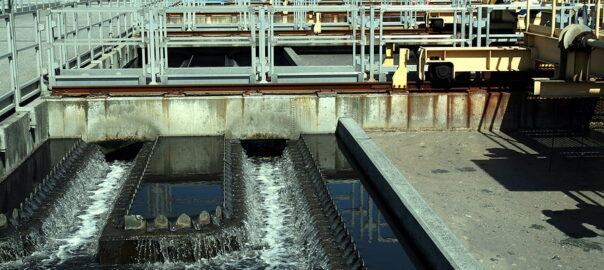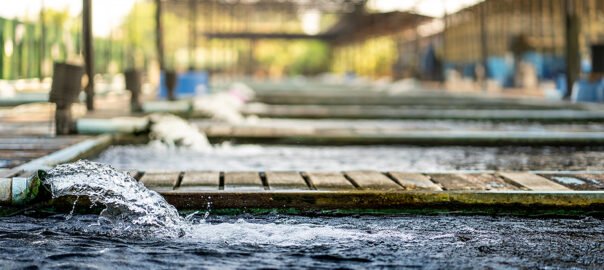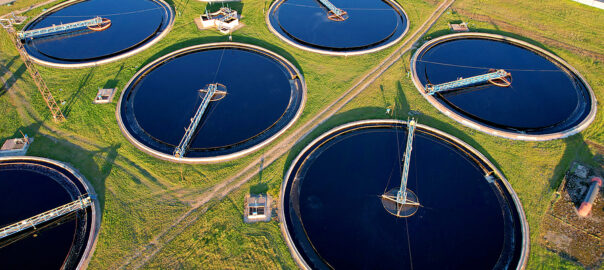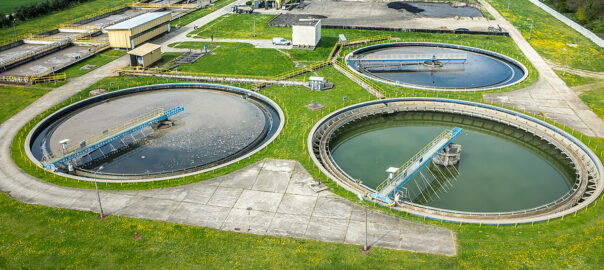
In wastewater treatment facilities, screening is an integral part of the process, particularly for sludge handling. It removes grit, plastics, and other debris before the sludge moves downstream for disposal. When screening is poor, the consequences can be highly disruptive to the process and even financially costly. Poor screening will lead to operational issues and deficiencies in wastewater treatment sludge screening.
What Does Poor Screening Mean?
Poor screening occurs when screening is defective or improperly designed, resulting in a range of issues in wastewater treatment operations. Poor screening can result from a variety of different things, including:
-
Inadequate screening openings
-
Screens that aren’t designed to handle fluctuating flows or the specific debris loads
-
Undersized or incorrect screens for the job
-
Damaged or poorly maintained screening equipment
Although some of these inefficiencies might seem minuscule, they can cause significant issues that propagate throughout the system. This can lead to costly problems and operational issues that could negatively impact your wastewater treatment facility.
The Cost of Poor Screening in Sludge Handling Systems
When assessing the cost of poor screening in sludge-handling systems, several factors must be considered. Poor screening affects multiple areas of your wastewater treatment operations, taking a heavy toll on the facility as a whole and resulting in costly outcomes. Here is a breakdown of why poor screening in sludge handling systems can be so expensive:
Equipment Wear and Tear
Unscreened debris can travel downstream and damage pumps, impellers, conveyors, valves, piping, and dewatering equipment. This ultimately will increase the damage and wear and tear to your equipment, causing increased maintenance or replacements as a result.
Maintenance and Labor Cost Increase
Facilities with poor screening can experience a range of issues that negatively affect the entire facility. It can cause more clogs, more emergency callouts, increased manual cleaning, high labor hours, and more emergency maintenance instead of planned maintenance, stunting operations. Labor, overtime, and maintenance costs add up quickly, especially when they are frequent.
Reduces Operational Efficiency
Debris in the sludge can cause inefficiency in downstream processes, resulting in increased energy usage, high polymer consumption, and lower solids capture rates. For operations, efficiency is essential, and these issues will result in lower efficiency and a higher cost per ton of sludge.
Increased Disposal
Poorly screened sludge contains more water and contaminants, which can lead to higher loads, more hauling, and higher landfill or disposal fees. Even a slight increase in sludge volume can significantly impact your disposal and annual budgets.
Health and Safety Risks
Poor screening leads to more manual removal, which is dangerous and can pose health risks to workers. This can expose workers to pathogens and cause them to slip, trip, or fall during manual removal. Avoid these health and safety risks by investing in proper screening to avoid manual removal at all costs.
Regulatory or Compliance Risks
In wastewater treatment facilities, a variety of compliance requirements must be met, and without proper screening, risks include permit violations, odor issues, equipment failures, and even environmental incidents. Non-compliance with these regulations due to inadequate screening can result in penalties, audits, and even legal action.
The Long-Term Financial Impact of Poor Screening
We’ve outlined several reasons why poor screening can be costly, but it’s important to note that these costs aren’t one-time. Many of these factors can have long-term financial impacts on the entire facility. At times, it might seem more convenient to forgo investing in adequate screening equipment to save money, but the consequences could be detrimental to your business. It is much more effective to invest in your sludge-handling screening ahead of time to avoid frequent maintenance, compliance, and emergency repair costs. Modern screening solutions can enable proactive investment rather than reactive spending. Think about proper screening as financial risk management that isn’t just an operational choice, but can set your finances up for success throughout the future of your facility’s lifespan.
How to Choose the Right Screen for Sludge Handling
There are a few steps you can take to help choose the proper screen for your wastewater treatment facility, ensuring you are selecting the right option for your facility.
Step 1: Match the screen type to the sludge characteristics.
Sludge characteristics vary by location, so selecting the appropriate screen type for your area will maximize efficiency.
Step 2: Ensure the screen size and placement are ideal for your facility.
For sludge-handling systems, a range of sizes and placements must be considered to ensure the screen performs its intended function.
Step 3: Implement routine inspections and maintenance to ensure that your screen is always properly checked.
This helps stay on top of maintenance and potential issues to keep the screen working effectively.
Step 4: Consider automation for monitoring to improve performance and even predictive maintenance.
This can reduce labor in that area and maintain efficiency.
Investing in Proper Screening for Your Wastewater Facility
Proper screening is essential for wastewater facilities, and it’s crucial to maintain screening to avoid costly issues. Having proper screening will help protect your downstream equipment, improve system reliability, and enhance safety and compliance, among other benefits. With poor screening, a variety of issues we’ve outlined above can become costly in the long run. To stay compliant and avoid ecologically risky situations in your facility, investing in adequate screening for Sludge-handling systems is essential. Visit our website at Lakeside Equipment to learn more about what we offer, and contact us to schedule a consultation on screening options that are right for your specific wastewater treatment facility.














